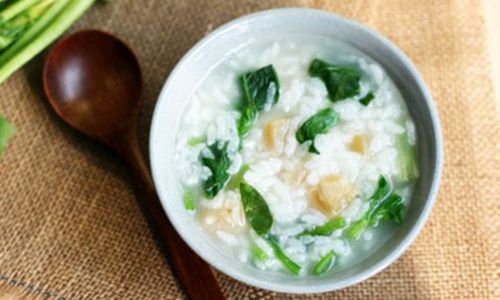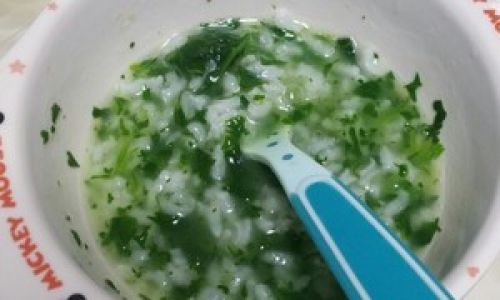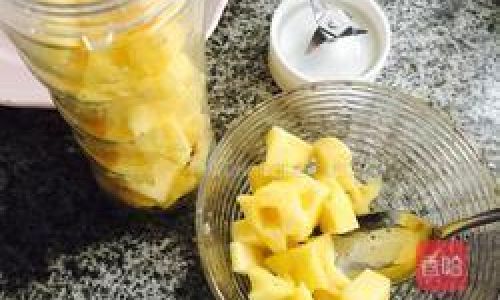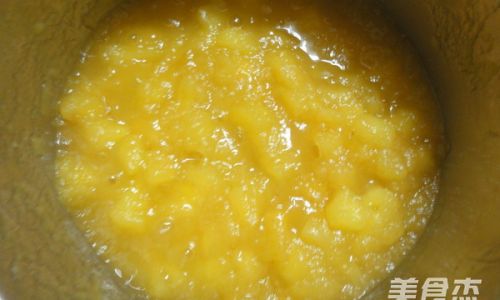Table of content
Introduction
Introducing solid foods to your baby is a milestone filled with excitement and a touch of nervousness. Among the first foods parents often choose, spinach porridge stands out as a nutrient-packed, easy-to-digest option. Rich in iron, vitamins A and C, and fiber, spinach supports healthy growth, immune function, and digestion. When combined with a mild grain like rice, it creates a creamy, soothing meal ideal for little ones transitioning from milk to solids. This article guides you through crafting the perfect baby spinach porridge, ensuring it is safe, delicious, and tailored to your child’s needs.
Why Spinach Porridge?
Spinach is a powerhouse of nutrition. For infants aged 6–8 months, its soft leaves break down easily, making it an excellent first green. Iron content in spinach aids in preventing anemia, while antioxidants like vitamin C enhance nutrient absorption. Additionally, its mild flavor allows babies to adapt to savory tastes without overwhelm.

Ingredients You’ll Need
Creating this porridge requires minimal, wholesome ingredients:
- Fresh Baby Spinach (1 cup, tightly packed): Opt for organic if possible to minimize pesticide exposure.
- Short-Grain White Rice (¼ cup): Its starchy texture cooks into a creamy base. Alternatively, use baby cereal for convenience.
- Water or Low-Sodium Vegetable Broth (1½ cups): For cooking rice and adjusting consistency.
- Breast Milk/Formula (Optional): Adds familiarity and creaminess.
- Herbs (Pinch of Dill or Parsley, optional): Introduces subtle flavor without salt.
Avoid salt, sugar, and spices until after the first birthday, as recommended by pediatricians.
Equipment Checklist
- Medium Saucepan: For cooking rice.
- Blender or Food Processor: To achieve a smooth consistency.
- Fine-Mesh Sieve: Removes fibrous spinach strands.
- Cutting Board and Knife: For trimming spinach stems.
- Ice Cube Trays (for freezing): Portioning for future meals.
Step-by-Step Preparation
Prepping the Spinach
- Wash Thoroughly: Rinse spinach under cold water to remove dirt. Soak in a vinegar-water solution (1:3 ratio) for 5 minutes to eliminate bacteria.
- Trim Stems: Remove tough ends, as they may cause choking in young eaters.
- Blanching: Boil water in a small pot, add spinach, and cook for 30–45 seconds. This reduces nitrates and preserves vibrant color. Immediately transfer to an ice bath to halt cooking.
Cooking the Rice
- Rinse Rice: Place rice in a sieve and rinse until water runs clear to remove excess starch.
- Simmer: In a saucepan, combine rice with 1 cup of water/broth. Bring to a boil, then reduce heat to low. Cover and simmer for 15–20 minutes until tender. Stir occasionally to prevent sticking.
Blending the Base
- Puree Rice: Transfer cooked rice and remaining liquid to a blender. Blend on high until smooth, adding extra water if needed. The consistency should resemble thin yogurt.
Incorporating Spinach
- Squeeze Excess Liquid: Drain blanched spinach and pat dry with a clean towel. Squeeze gently to remove moisture.
- Blend Again: Add spinach to the rice puree. Blend until velvety, scraping down sides as necessary. For older babies (8+ months), leave tiny flecks for texture practice.
Adjusting Consistency
- Thinning: Use breast milk, formula, or water.
- Thickening: Simmer uncovered for 2–3 minutes, stirring constantly.
Serving Suggestions
- Temperature Check: Ensure the porridge is lukewarm (around 98.6°F/37°C) to avoid burning your baby’s mouth.
- Portion Size: Start with 1–2 tablespoons, gradually increasing to ¼ cup as appetite grows.
- Pairings: Serve with mashed avocado or sweet potato for added calories and variety.
Nutritional Boosters and Variations
- Protein Power: Stir in 1 teaspoon of mashed lentils or Greek yogurt (after 8 months).
- Grain Swap: Use quinoa or oatmeal instead of rice for a gluten-free alternative.
- Herb Infusion: Add a pinch of basil or mint during blending for aromatic flair.
Freezing and Storage
- Ice Cube Method: Pour porridge into trays, freeze until solid, then transfer to labeled freezer bags. Thaw overnight in the fridge.
- Reheating: Warm gently on the stove or in a microwave (use 15-second bursts, stirring thoroughly).
Safety First: Avoid These Mistakes
- Skipping Blanching: Raw spinach contains oxalic acid, which may hinder calcium absorption. Blanching neutralizes this.
- Overloading Spices: Strong flavors can overwhelm delicate palates.
- Using Tough Stems: Always remove fibrous ends to prevent choking.
- Reheating Multiple Times: Discard uneaten portions to prevent bacterial growth.
Troubleshooting Guide
- Porridge Too Thick? Add breast milk or broth incrementally.
- Lumpy Texture? Strain through a sieve before serving.
- Baby Refuses It? Mix with a familiar puree (e.g., apple) or offer during playtime.
When to Introduce Spinach
Most pediatricians recommend starting solids between 4–6 months, but spinach is best introduced after 6 months when digestive systems mature. Watch for signs of readiness:

- Ability to sit with support.
- Loss of tongue-thrust reflex.
- Interest in your food.
The Science Behind Spinach and Baby Nutrition
Spinach’s iron is non-heme, which the body absorbs best with vitamin C. Pairing it with broccoli or bell peppers (in older babies) enhances iron uptake. Additionally, its nitrates convert to nitric oxide, promoting circulation—a bonus for active little ones!
Cultural Adaptations
- Indian-Inspired: Add a pinch of turmeric for its anti-inflammatory benefits.
- Mediterranean Twist: Mix in a drop of olive oil for healthy fats.
- Asian Fusion: Incorporate a teaspoon of mashed tofu for plant-based protein.
FAQs
Q: Can I use frozen spinach?
A: Yes, but thaw and drain excess liquid before blending.
Q: How long does homemade porridge last?
A: Refrigerate for up to 48 hours; freeze for 3 months.
Q: My baby has constipation. Will spinach help?
A: Its fiber content may aid digestion, but introduce gradually to avoid gas.

Conclusion
Crafting baby spinach porridge is an act of love that nourishes both body and curiosity. By prioritizing fresh ingredients, proper preparation, and patience, you’re setting the stage for a lifetime of healthy eating habits. Experiment with textures, flavors, and pairings as your child grows, and remember—every spoonful is a step toward independence and adventure. Bon appétit, little one!





0 comments